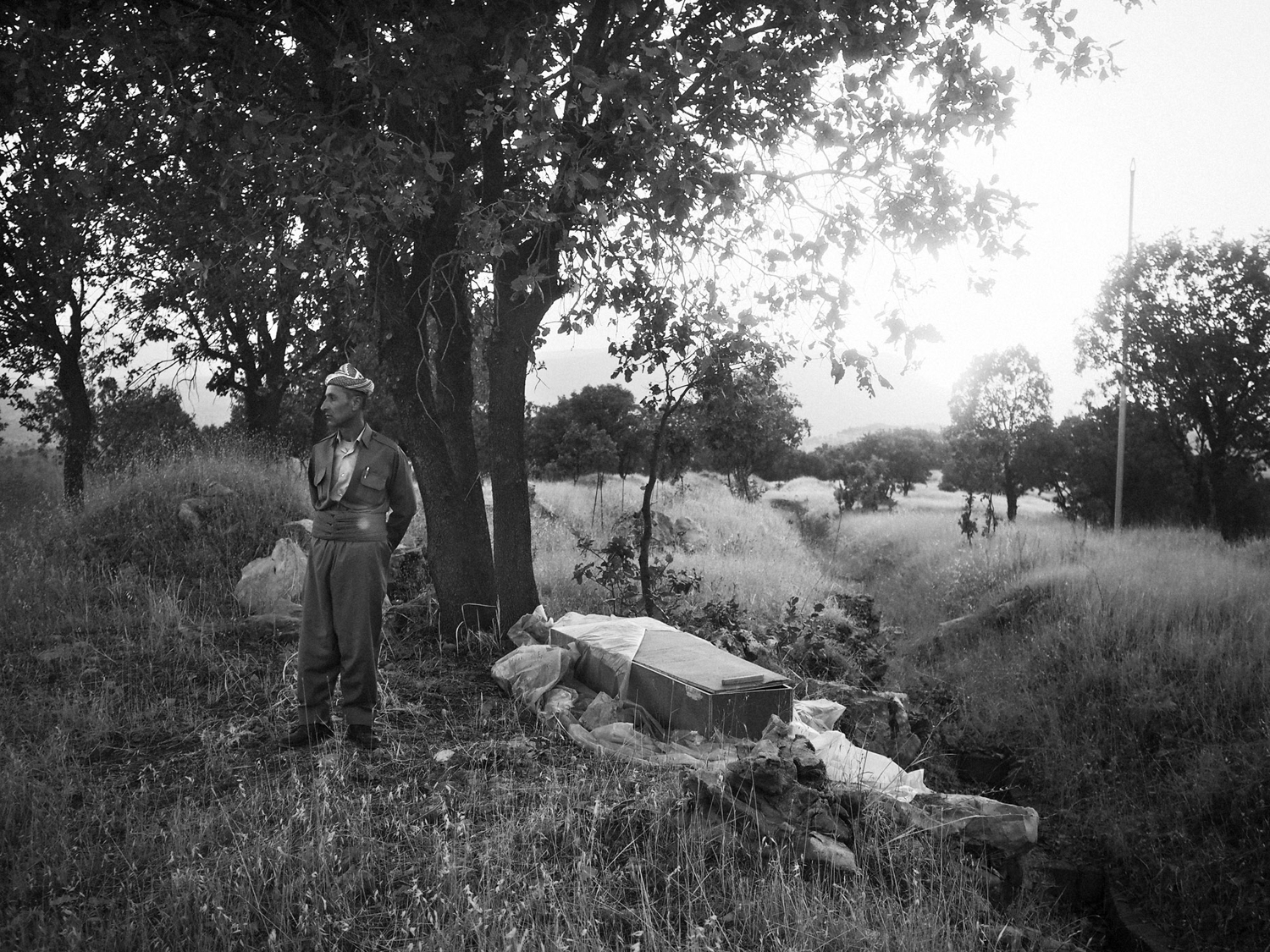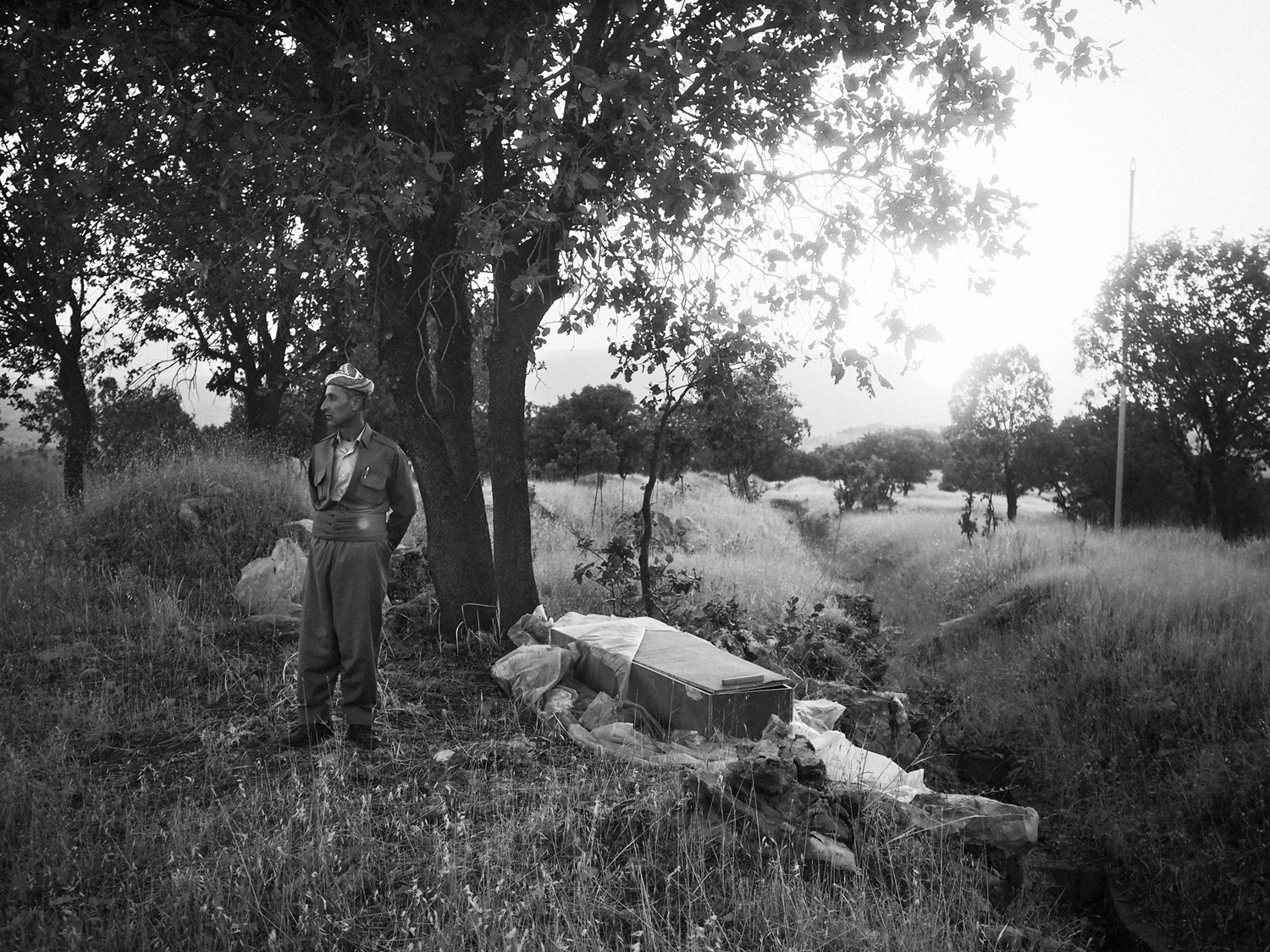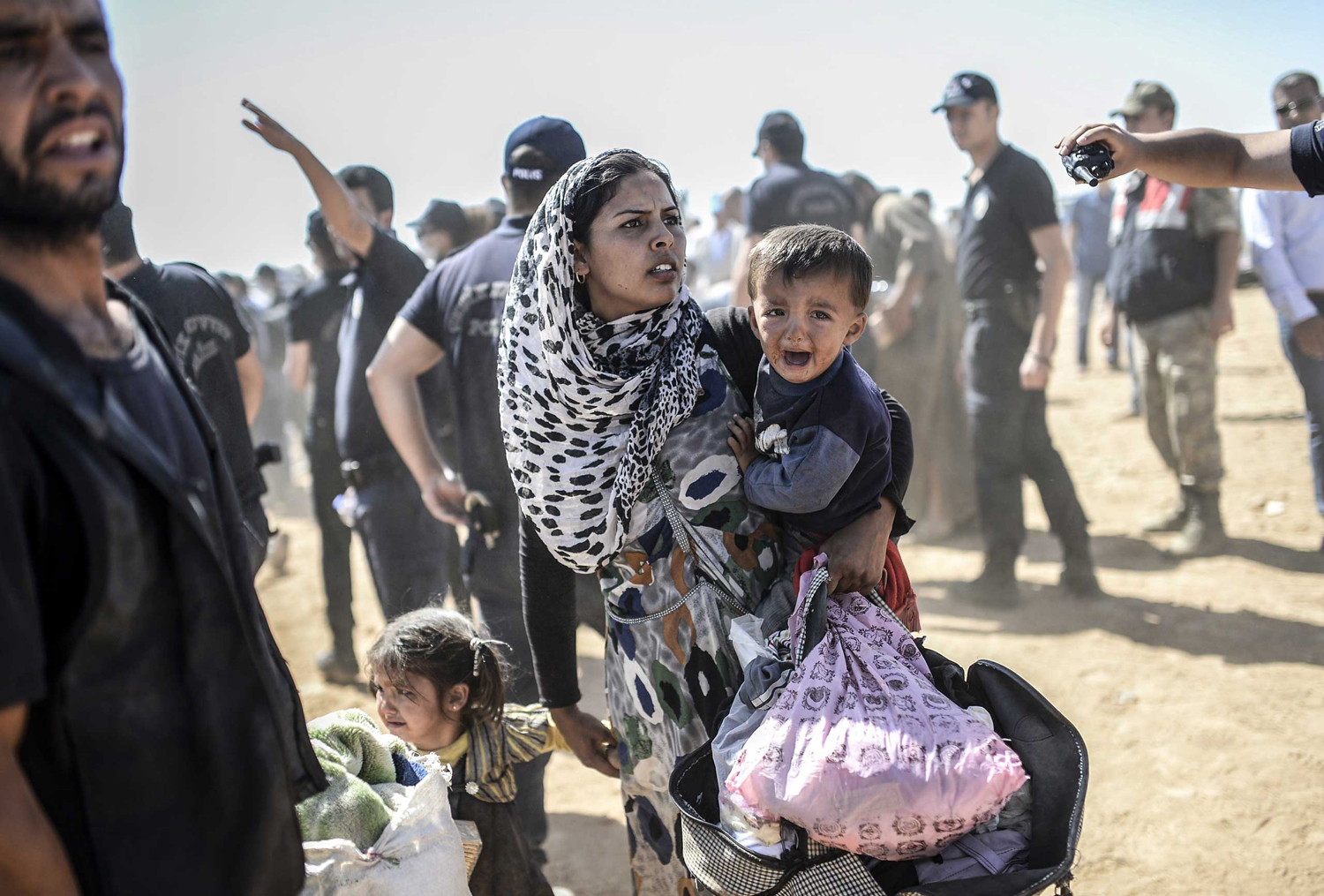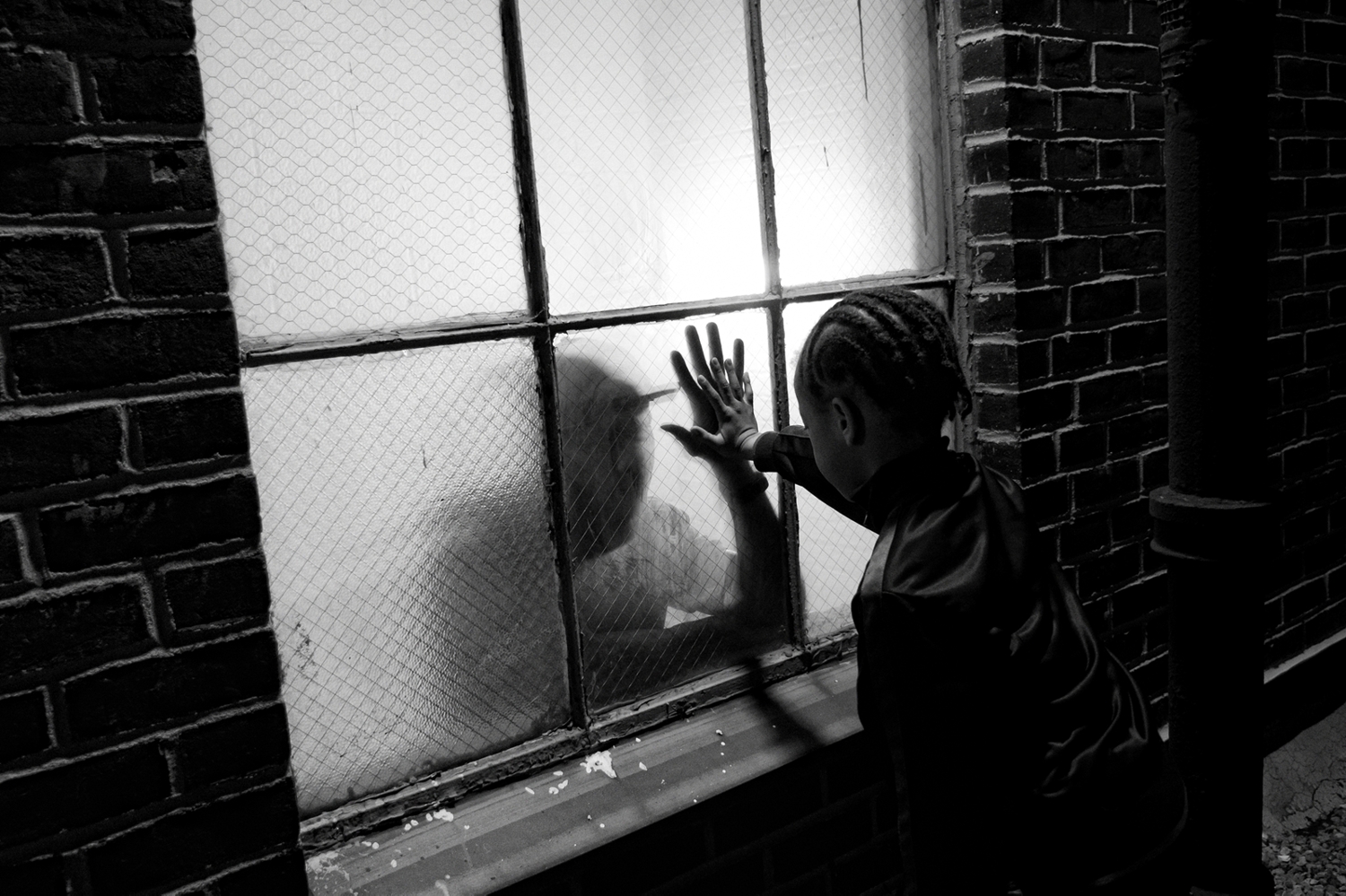
Today’s daily Photojournalism Links collection highlights Moises Saman’s poetic photographs from northern Iraq, where Kurdish and ISIS-held territories collide. The pictures capture the long-contested region through the experience of peshmerga fighters, internally displaced Shi’ites, and Kurdish civilians, all of whom are now faced with living next to a new, militant enemy.
Moises Saman: On the Kurdish Front Against ISIS (The New Yorker)
Bulent Kilic: Refugees on the Syria-Turkey Border (Time.com) The Agence France-Presse photographer has done powerful work documenting the ISIS-fleeing Syrian Kurds.
John Stanmeyer: Refugee Flood Heightens Long-Standing Tensions Between Turks and Kurds (National Geographic News) More of Stanmeyer’s pictures from the Syria-Turkey border. An earlier set of images was featured here three days ago.
Zun Lee: Black Fathers, Present and Accountable (The New York Times Lens blog) Photographs that challenge the notion of absent black fathers.
On the Wall: How Photographers Envision Human Rights (American Photo) A new exhibition at the Human Rights Center at UC Berkeley School of Law, highlights social documentary photography by Sebastião Salgado, Gilles Peress, and Susan Meiselas.
Sebastião Salgado (National Public Radio) Yet another interview with Salgado, related to his Genesis exhibition in New York.
Royal Photographic Society announces winners of 2014 Awards (British Journal of Photography) Wrap-up of this year’s RPS honors, who included Magnum’s Steve McCurry and Chris Steele-Perkins.
Photojournalism Links is a compilation of the most interesting photojournalism found on the web, curated by Mikko Takkunen, Associate Photo Editor at TIME. Follow him on Twitter @photojournalism.



More Must-Reads from TIME
- Donald Trump Is TIME's 2024 Person of the Year
- TIME’s Top 10 Photos of 2024
- Why Gen Z Is Drinking Less
- The Best Movies About Cooking
- Why Is Anxiety Worse at Night?
- A Head-to-Toe Guide to Treating Dry Skin
- Why Street Cats Are Taking Over Urban Neighborhoods
- Column: Jimmy Carter’s Global Legacy Was Moral Clarity
Contact us at letters@time.com